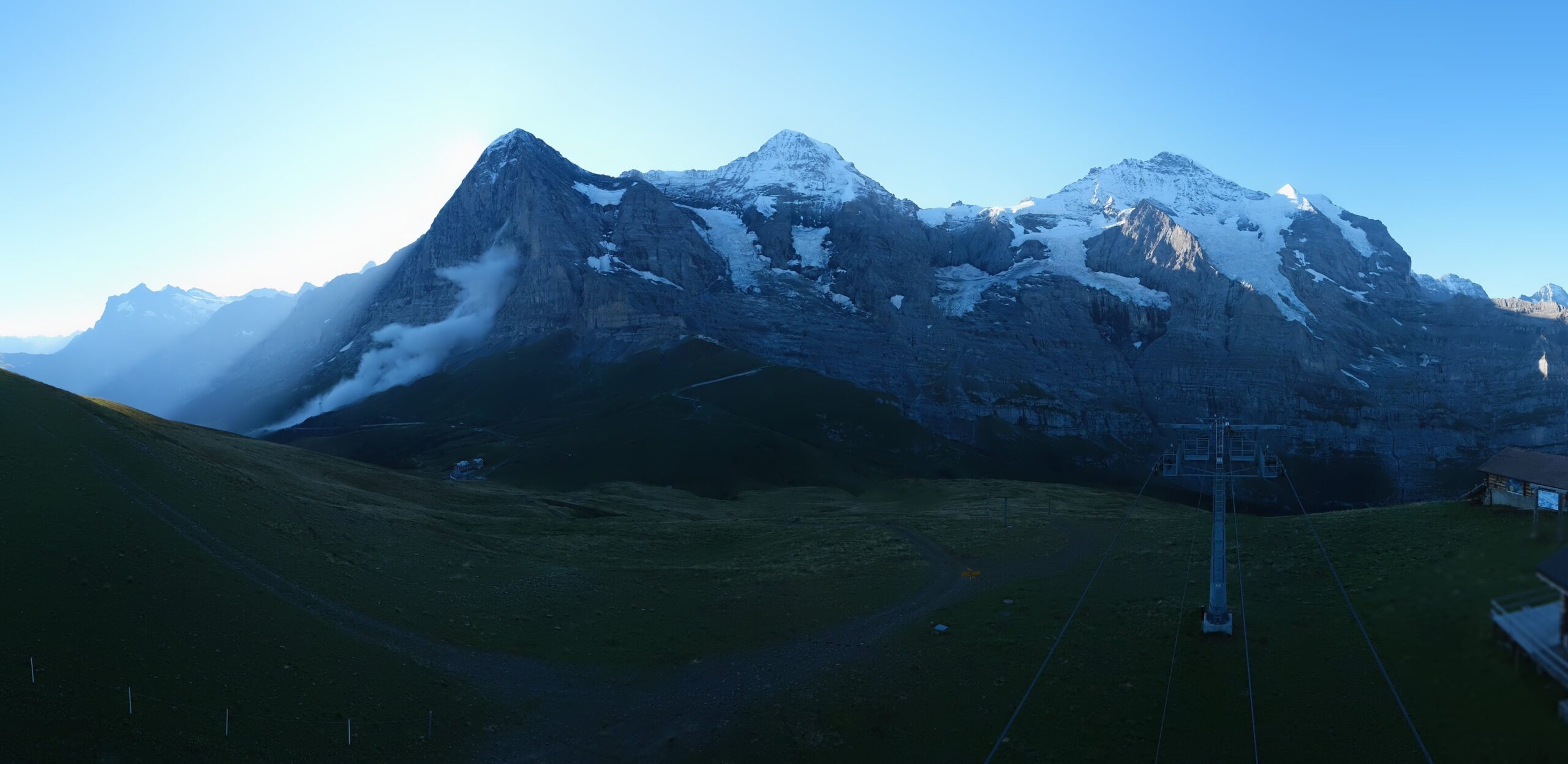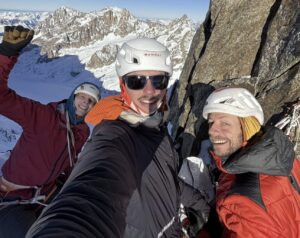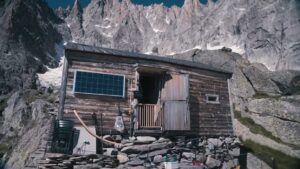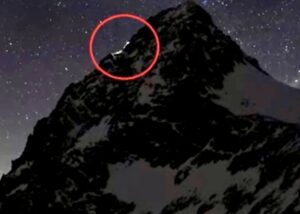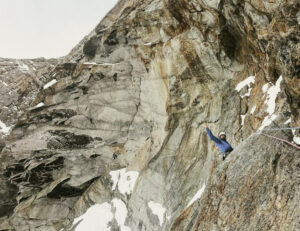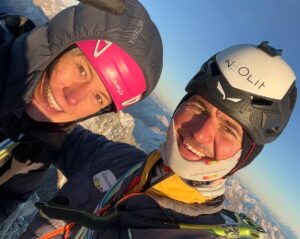On Saturday morning, a major rockfall occurred on the North Face of the Eiger, covering the Swiss valley in a cloud of dust.
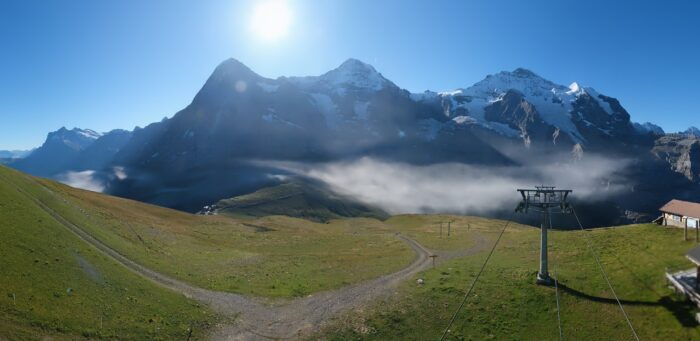
A cloud of dust remained for hours after the rockfall. Photo: jungfrau.roundshot.com
A large boulder that came loose on the upper side of the face triggered the slide. A temperature inversion caused the dust cloud to spread throughout the valley, where it lingered for hours. A celiometer (cloud-measuring device) and webcams at Kleine Scheidegg registered the disturbance, according to @meteoschweiz.
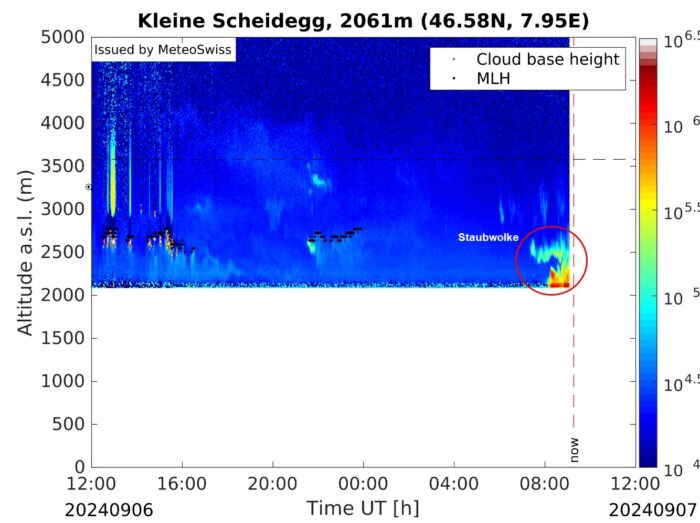
The ceilometer at Kleine Scheidegg registered the dust cloud, on the right of the image.
Such events happen in the Berner Oberland from time to time due to thawing permafrost. Until recent years, ice and snow within and between the rocks largely glued together the unstable slopes. As this “glue” melts in the higher temperatures, the rocks become even more unstable.
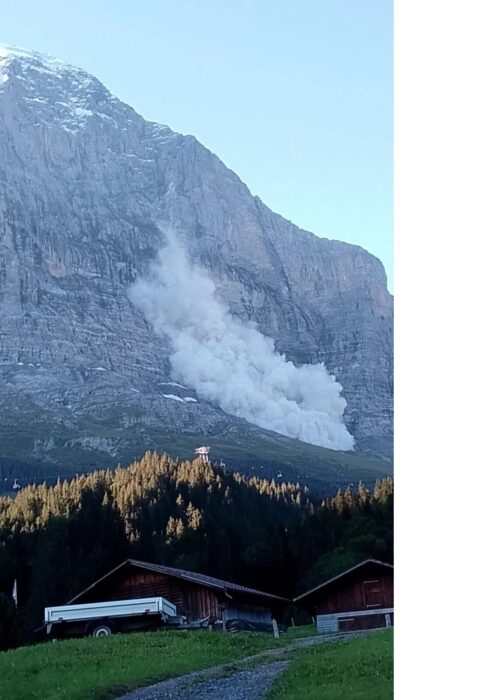
Saturday’s rockfall on the North face of the Eiger. Photo: Blick/Facebook
Bigger than usual
“Such rockfalls are not uncommon,” Kathrin Naegeli, media spokeswoman for Jungfrau Railways, told Berneroberlaender.ch. “The last time this happened was at the beginning of August.”
Naegeli confirmed that the slide did not affect the Jungfrau Railway, which runs through the tunnel carved inside the Eiger and Monch mountains, or the Eiger Trail along the foot of the mountain. No reports indicate whether the rockfall changed any climbing routes.
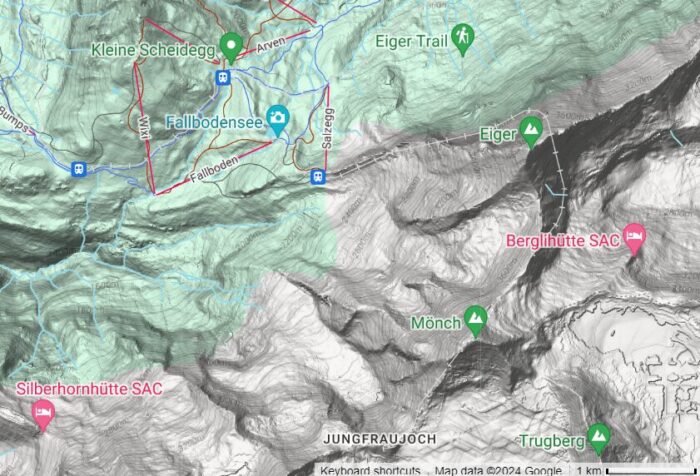
Eiger-Jungfrau area on Google maps
While rockfalls are common here, the size of this one was remarkable.
“Rock avalanches are increasing, and events of this size are [unusual],” glaciologist Melaine Le Roi told ExplorersWeb. “Observations around the Alps show permafrost degradation is the main trigger for high-elevation rock avalanches.”
The expert noted that the North face of Eiger and the detachment zone are above the lowest limit of permafrost. Read more about permafrost thawing and its effects on alpine faces here.
The Eiger North Face had another major rockfall event just one year ago.
